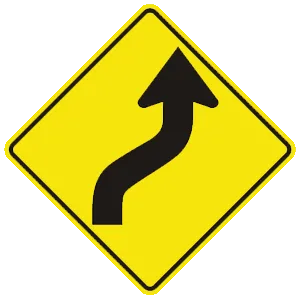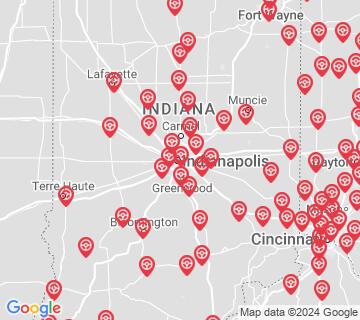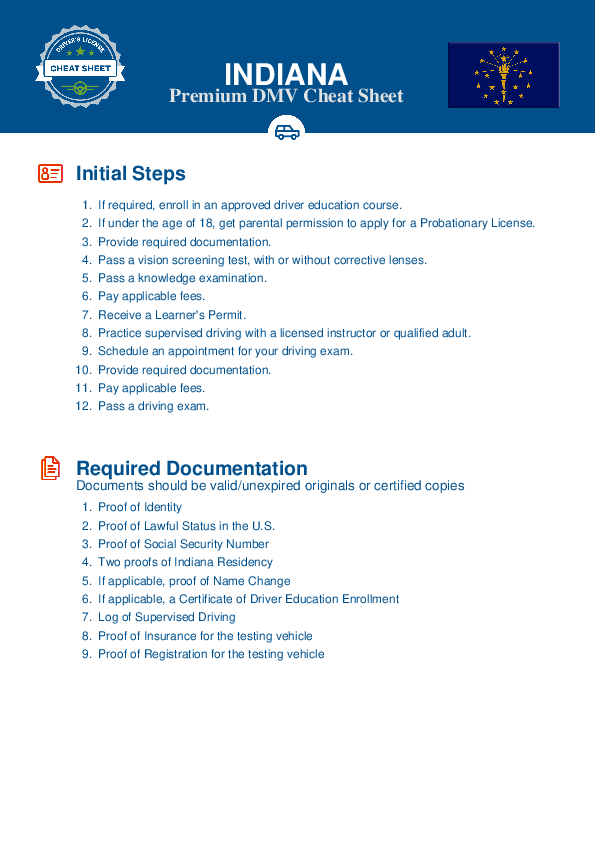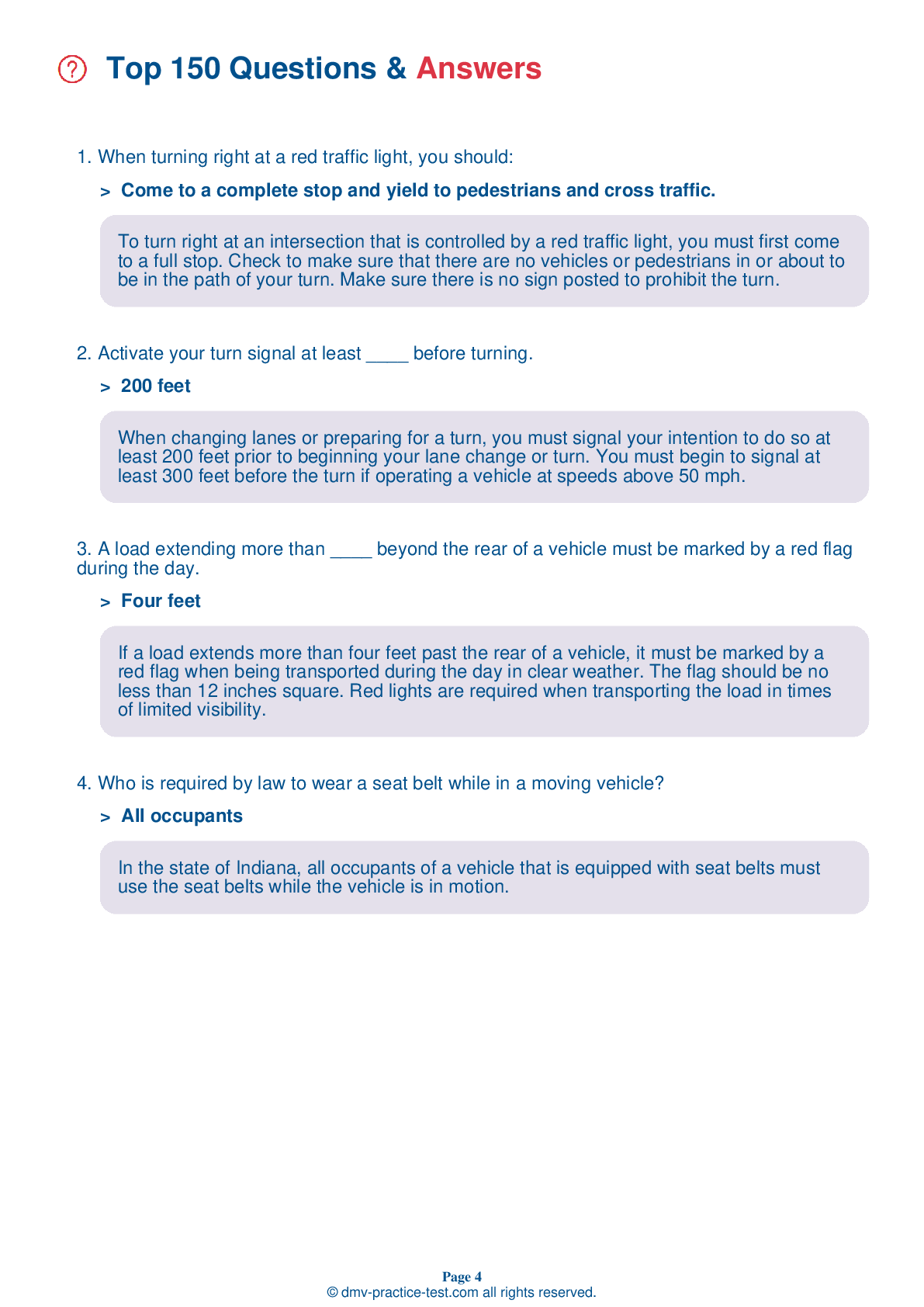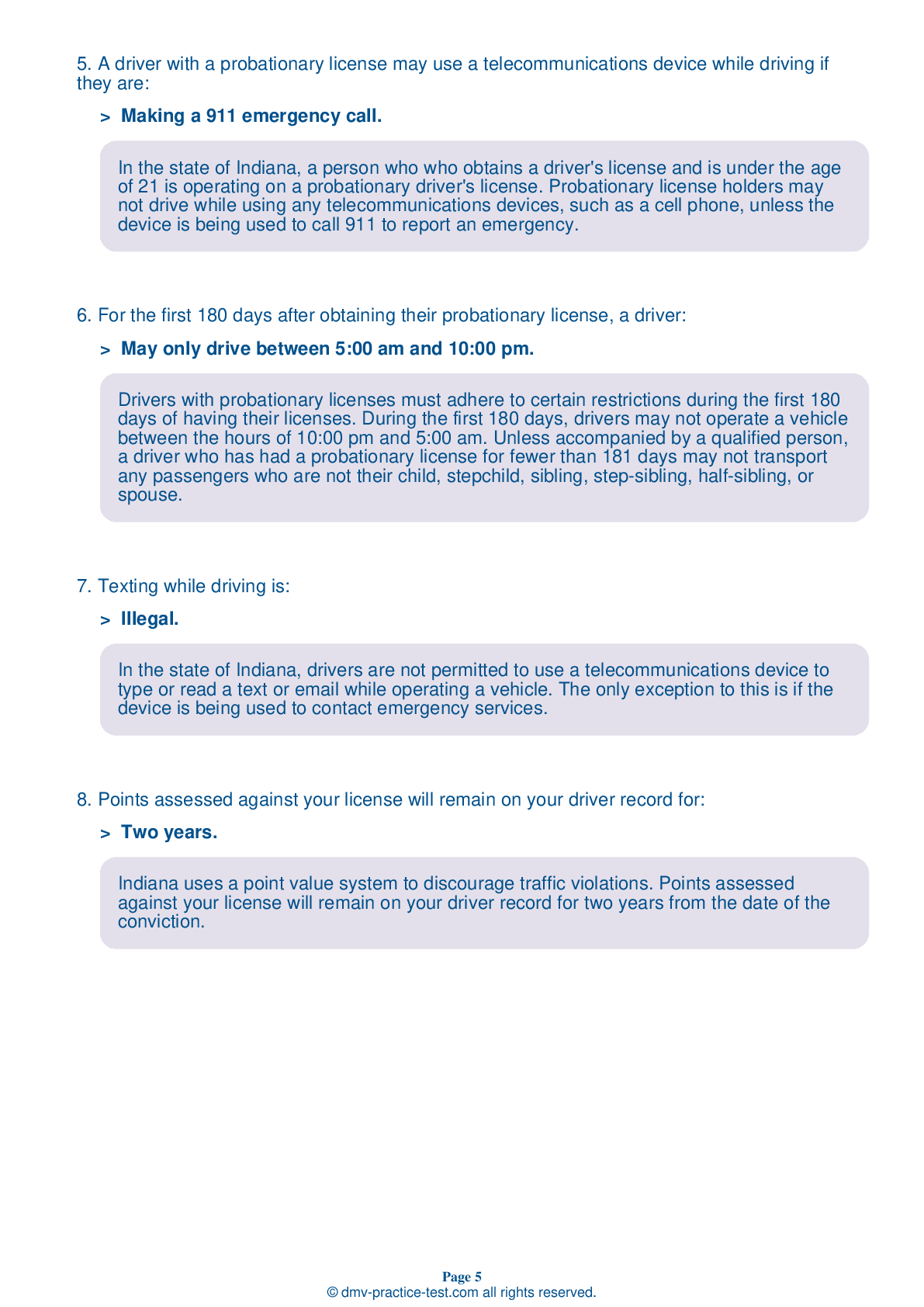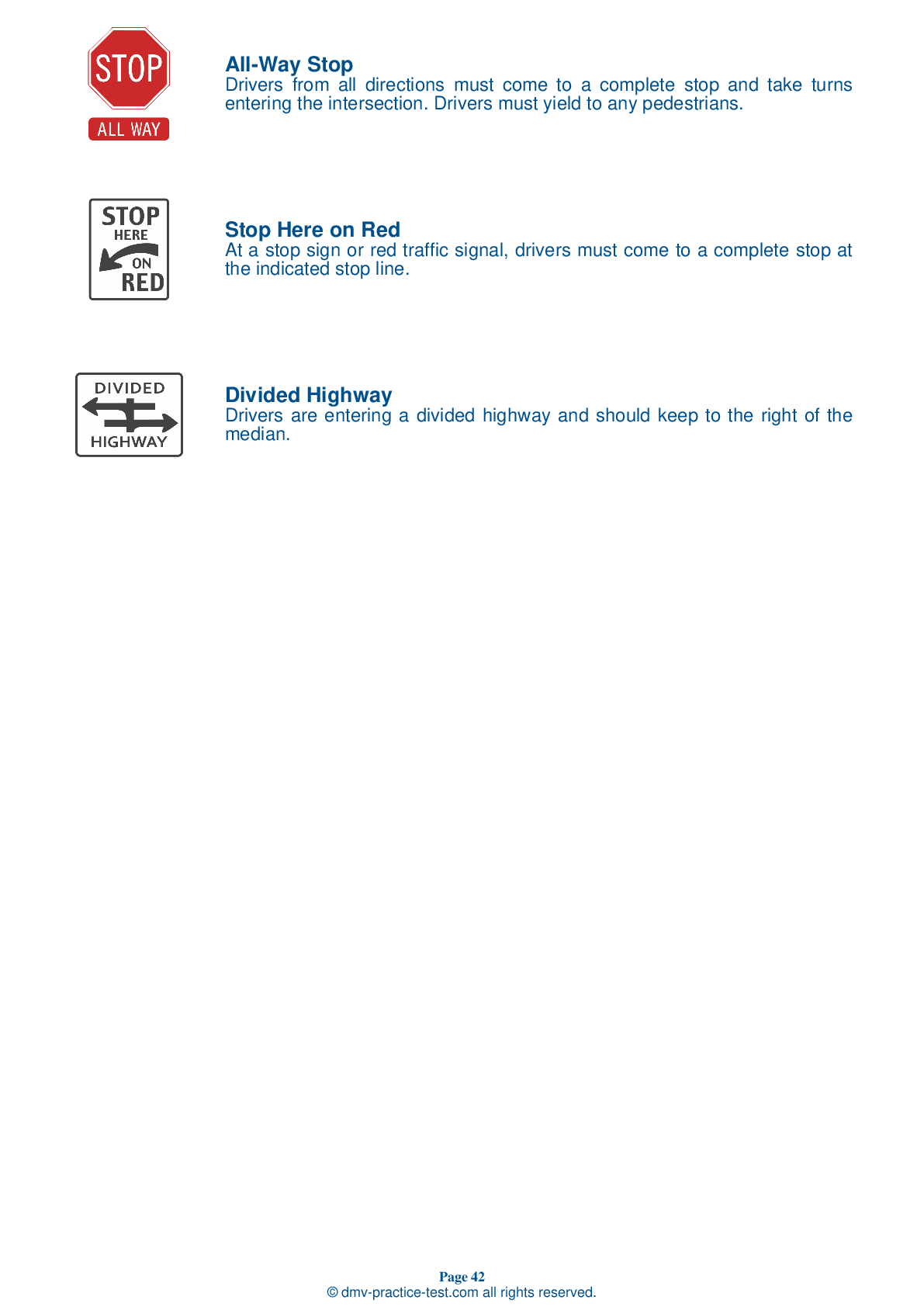FREE Indiana DMV Practice Test #1 Page 3 of 5
This set of Indiana DMV practise tests has been updated for January 2025. It includes questions based on the Indiana Driver Handbook's most significant traffic signals and laws for 2025. Use actual questions that are very similar (often identical!) to the DMV driving permit test and driver's licence exam to study for the DMV driving permit test and driver's licence exam.
On the practise exam, each question gets a tip and explanation to help you remember the concepts. The written component of the official Indiana DMV test will include questions about traffic rules, traffic signs, and driving statutes, as well as information from the Driver Handbook.
To obtain a passing grade, you must correctly answer 44 of the 50 questions. Take our DMV practise exam to help you prepare for your Indiana instruction permit or driver's licence.
The DMV exam is available in several languages.
Using any kind of testing assistance will result in an automatic fail, and the DMV may take additional action against your driver's licence, so stay away from it.
17 . This sign means:
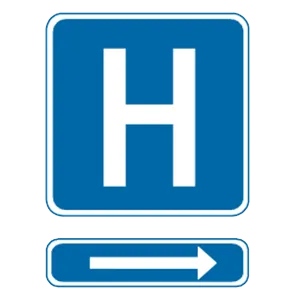
This sign indicates that hospital emergency services are located to the right.
18 . Traffic signals sometimes display arrows to control turns from specific lanes. A solid red arrow:
A solid red arrow in a traffic signal means the same thing as a circular red traffic light. When an arrow is red, traffic in the indicated lane must stop and may not turn in the direction that the arrow is pointing.
19 . Which of the following is a safe way to drive through a curve?
You should slow down as you enter a curve and increase your speed gradually as you exit. Increasing your speed as you enter a curve will make it more difficult to control your vehicle.
20 . This road sign means:
